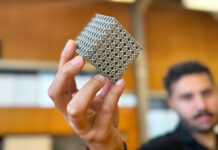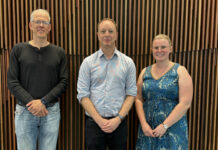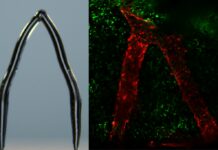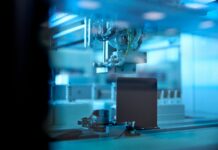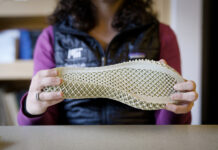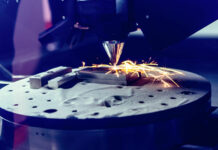Fraunhofer IGD technology can deliver computer-generated 3D-printed eye prostheses
Fraunhofer IGD, the research institute behind the Cuttlefish® 3D printer driver – first unveiled in 2021, has given hope to patients who need ocular...
RMIT develops a 3D printed ‘metamaterial’ with properties not normally seen in nature
This title looks like the beginning of a Sci-Fi book but it is not. Researchers from Australia-based RMIT have developed a new metamaterial –...
When 3D printing helps to enhance breast reconstruction surgery
Across the world, several organizations have been exploring the use of 3D printing for breast implants. While several developments are still in progress, the...
The iLAuNCH project team relies on AM of large-scale composite structures to build a rocket
To withstand the extreme loads, vibrations and shocks of launch without failure, it is of paramount importance that launch vehicles benefit from scalable production...
Have you heard about 3D ice printing? It can help create structures that resemble blood vessels in the body
When they say, 3D printing can help create “anything”, this might actually be true. We have witnessed the possibility of 3D printing to process...
A.D.A.M’s next key project focuses on 3D printed bone implants
Advanced Development of Additive Manufacturing (A.D.A.M.), a provider of 3D printing systems for customized bone implants, and the Icahn School of Medicine at Mount Sinai, in New...
The Materials Processing Institute to develop an AI tool that will enable the production of 3D-printed parts while saving costs
Together with software provider AMFG and provider of material and process validation services Additive Manufacturing Solutions Ltd, the Materials Processing Institute will develop an...
Designers could leverage this MIT model to optimize 3D-printed shoe performance
With the goal of discovering which shoe best suits a person’s particular running style, MIT engineers have developed a new model that predicts how...
Auburn University to support the US Army with its Additive Manufacturing expertise in a $50M project
Auburn University just secured what is described as the largest research contract in university history. Through a new three-year project, the advanced manufacturing team...
Identifying defects by “listening” for them as they occur in a metal 3D printer
Acoustic monitoring for detecting porosity in laser powder bed fusion could be viable.
In a recent article, we learned that one can identify defects in...




